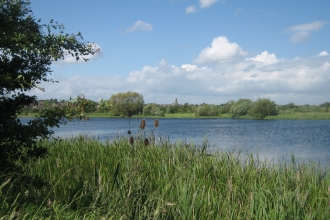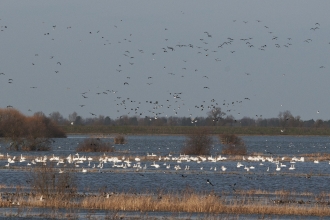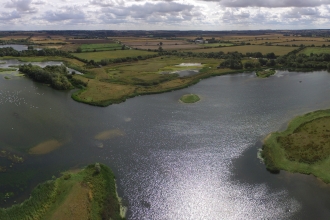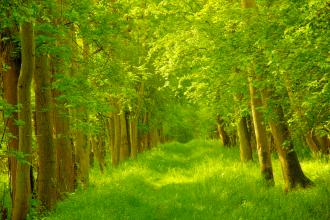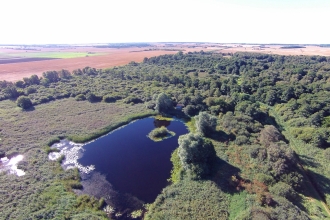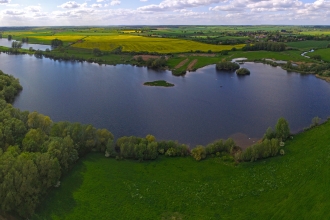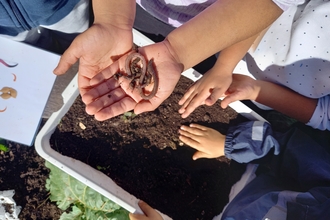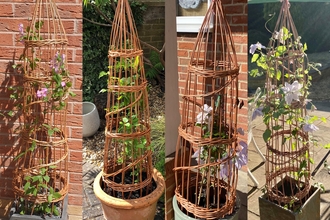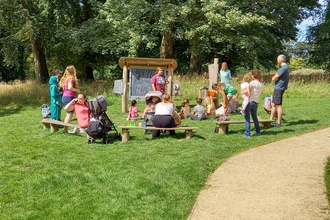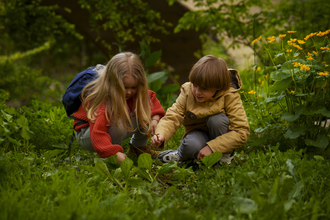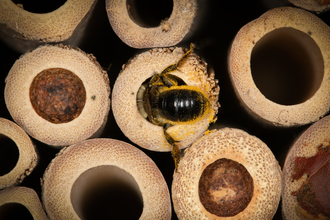"Winter is an etching, spring a watercolour, summer an oil painting, and autumn a mosaic of them all." - Stanley Horowitz
Autumn seems to have arrived early this year: already woodlands are turning a mix of bright colours, hedgerows and gardens are full of fruits and berries and wildlife migrations are taking place. In many ways it is the busiest time of year for nature. Scroll down to learn a bit more about this time of year and to see our top pick of nature reserves to visit.
Autumn is also a busy time of the year for our conservation team: help us to protect nature by becoming a Wildlife Trust for Bedfordshire, Cambridgeshire & Northamptonshire member.

Apple Juicing at Old Sleningford Farm, Winner of the 2009 Nidderdale AONB Conservation Award - Paul Harris/2020VISION
Why is it called autumn?
The word 'autumn' became popular in the 19th century and came from the latin word autumnus, which itself came from the Pre-Indo-European language Etruscan. Unfortunately it's original meaning has been lost in time as Etruscan died out long ago.
Before the 16th century, 'harvest' (from Old English hærf-est) was commonly used to refer to this season. It means to pluck or gather fruits and berries. However, as people moved from the countryside into towns it lost its reference to the season and came to refer only to the actual activity of reaping. 'Fall' comes from the expression 'fall of the leaf' and was also used in England until autumn became more popular.
Highlights
Fungi
Fungi at Waresley Wood - Laura Osborne
Fungi love autumn. They feed on living and dead matter and generally like wet conditions. With lots of leaves on the ground this is a great time for them. Fungi obviously have no mouths or stomachs and instead they work their way through or over their food, absorbing nutrients directly through their cell walls.
Autumn migrants

Pink-footed Geese Anser brachyrhynchus leaving overnight roost on The Wash Norfolk winter - David Tipling/2020VISION
Winter visitors like fieldfares, redwings and many kinds of ducks, geese and wading birds arrive here from colder places in the north and east. Passage migrants like little gulls and black terns are birds that stop off for a rest on a longer journey to somewhere else.
Partial migrants are birds that migrate in some places but not others. Starlings are in the UK all year but in Eastern Europe they migrate to warmer places in winter.
Irruptions are a mass arrival of birds that do not usually visit in large numbers. Waxwings are a great example. Sometimes they run out of food in Scandinavia and head to Britain for a Viking raid!
Moult migrants are birds like British shelducks which moult in the winter, meaning they can't fly. Before this happens they journey to safer places like small islands for the winter.
Starling murmurations
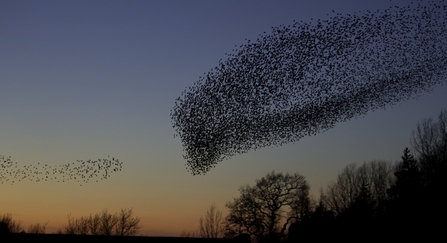
Starling murmuration by Danny Green/2020VISION
Autumn and winter are great times to see starling murmurations. These great flocks of up to 10,000 birds dance in the air, usually just after the sunset, before roosting in nearby reed beds. It is a magical wildlife experiences and a number of Trust reserves see murmurations each year.
Top Reserves in Autumn
Upcoming events

Autumn leaves, Forest Wood, 02.11.2011, Cumbernauld, morning, sunrise, clear sky - Katrina Martin / 2020VISION
Why do leaves change colour?
During spring and summer plants make chlorophyll, which they need to create food from sunlight. Chlorophyll has a green pigment, hence why trees are green during this period.
As the sun weakens and the temperature gets colder in autumn, plants begin to hibernate and stop making chlorophyll. As the green pigment diminishes, other colour pigments are revealed in the leaves of plants like yellows, reds and oranges.


